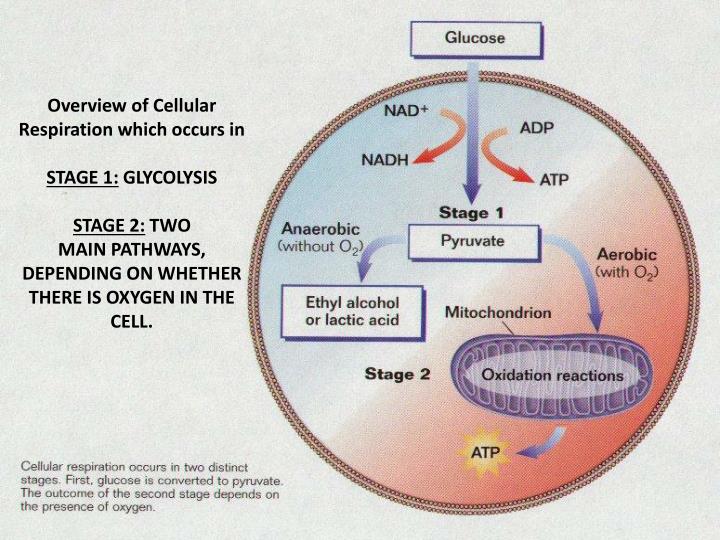
To put it another way, a cellular process which requires 100 molecules of ATP: In contrast, only 2 molecules of ATP are generated in anaerobic respiration. One molecule of glucose can generate up to 38 molecules of ATP if aerobic respiration is used. Plant cells and yeast: carbon dioxide and ethanolĪerobic respiration is much more efficient than anaerobic respiration. For right now, just know that NADH carries energy (similar to ATP) and NAD+ is the form that carries less energy (similar to ADP) Aerobic vs anaerobic respiration It will be addressed further in a later section. NAD+ and NADH are two states of a molecule that will carry energy during this process. Instead, various other methods are used to regenerate the molecules needed for glycolysis, For now, we will summarize them all using this chemical formula:Ĭ 6H 12O 2 NAD+ → various waste products + NADH + 2 ATP All the types of anaerobic respiration involve glycolysis, and none of them go through the citric acid cycle or oxidative phosphorylation. There are several different types of anaerobic respiration, which will be discussed in more detail later.

Many prokaryotes perform anaerobic respiration.

It also occurs in yeast when brewing beer. Anaerobic respiration occurs in muscle cells during hard exercise (after the oxygen has been used up). Anaerobic respiration does not release enough energy to power human cells for long – think about how long a person can live if they are not able to breathe. It releases a much smaller amount of energy than aerobic respiration. Anaerobic RespirationĪnaerobic respiration occurs in the absence of oxygen. The next several sections in the textbook address the details of these stages. This process has an overall release of energy which is captured and stored in 38 molecules of ATP.Īerobic respiration is a complex process that can be divided into three basic stages: glycolysis, the citric acid cycle, and oxidative phosphorylation. Translating that formula into English: One molecule of glucose can be broken down in the presence of oxygen gas to produce waste products of carbon dioxide (which we breathe out) and water. The overall chemical formula for aerobic respiration can be written as:Ĭ 6H 12O 2 + 6 O 2 → 6 CO 2 + 6 H 2O + (approximately) 38 ATP

Even some prokaryotes can perform aerobic respiration (although since prokaryotes don’t contain mitochondria, the reactions are slightly different). Aerobic respiration happens all the time in animals and plants, where most of the reactions occur in the mitochondria. This type of respiration releases a large amount of energy from glucose that can be stored as ATP. This is the reason why we breathe oxygen in from the air. Aerobic RespirationĪerobic respiration requires oxygen. These processes require a large number of enzymes which each perform one specific chemical reaction.
Cellular respiration an overview series#
Glucose and other molecules from food are broken down to release energy in a complex series of chemical reactions that together are called cellular respiration.Ĭellular respiration is a set of metabolic reactions and processes that take place in the cells of organisms to convert biochemical energy from nutrients into ATP, and then release waste products. The reactions involved in respiration are catabolic reactions, which break large molecules into smaller ones, releasing energy in the process.


 0 kommentar(er)
0 kommentar(er)
